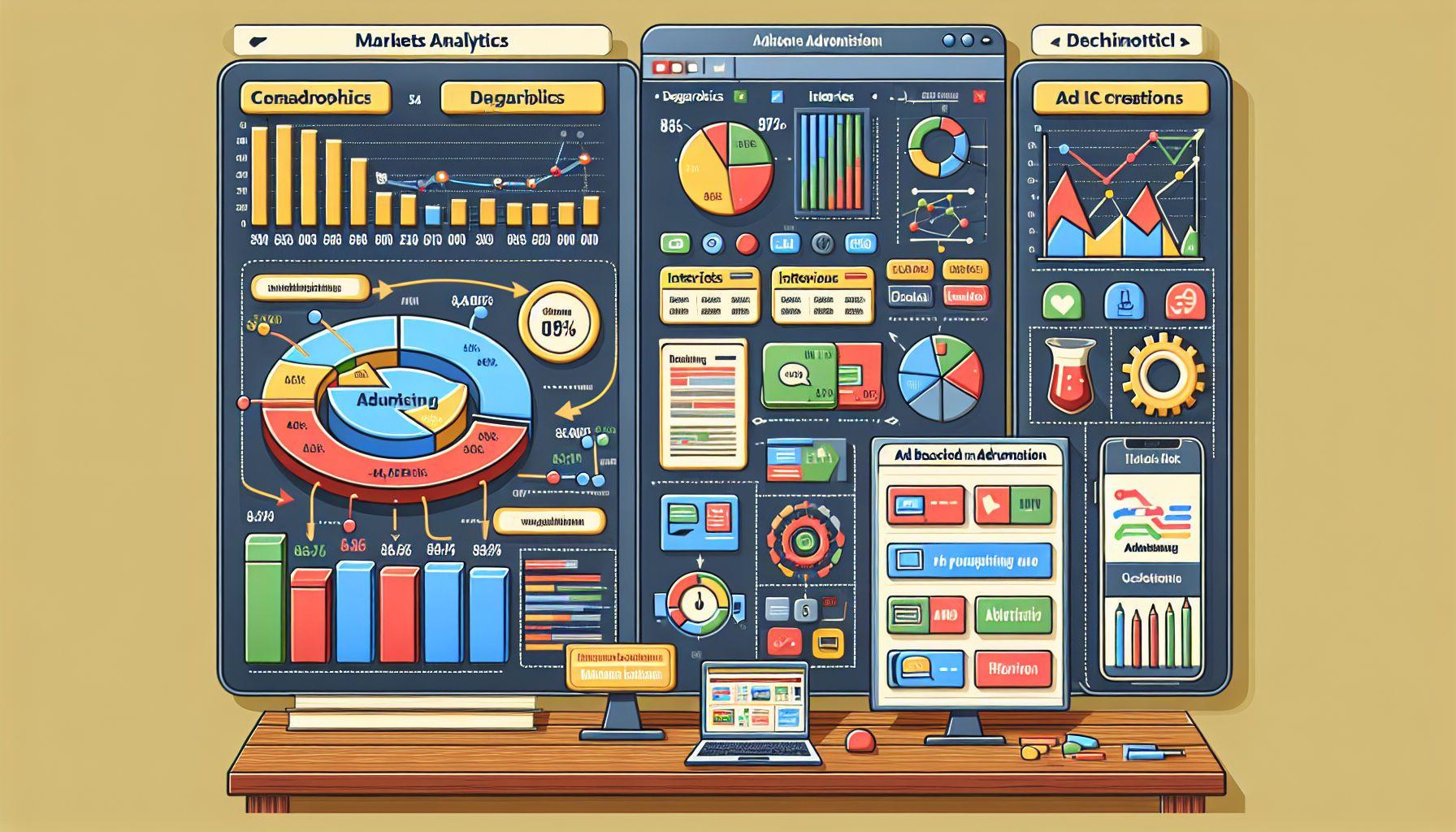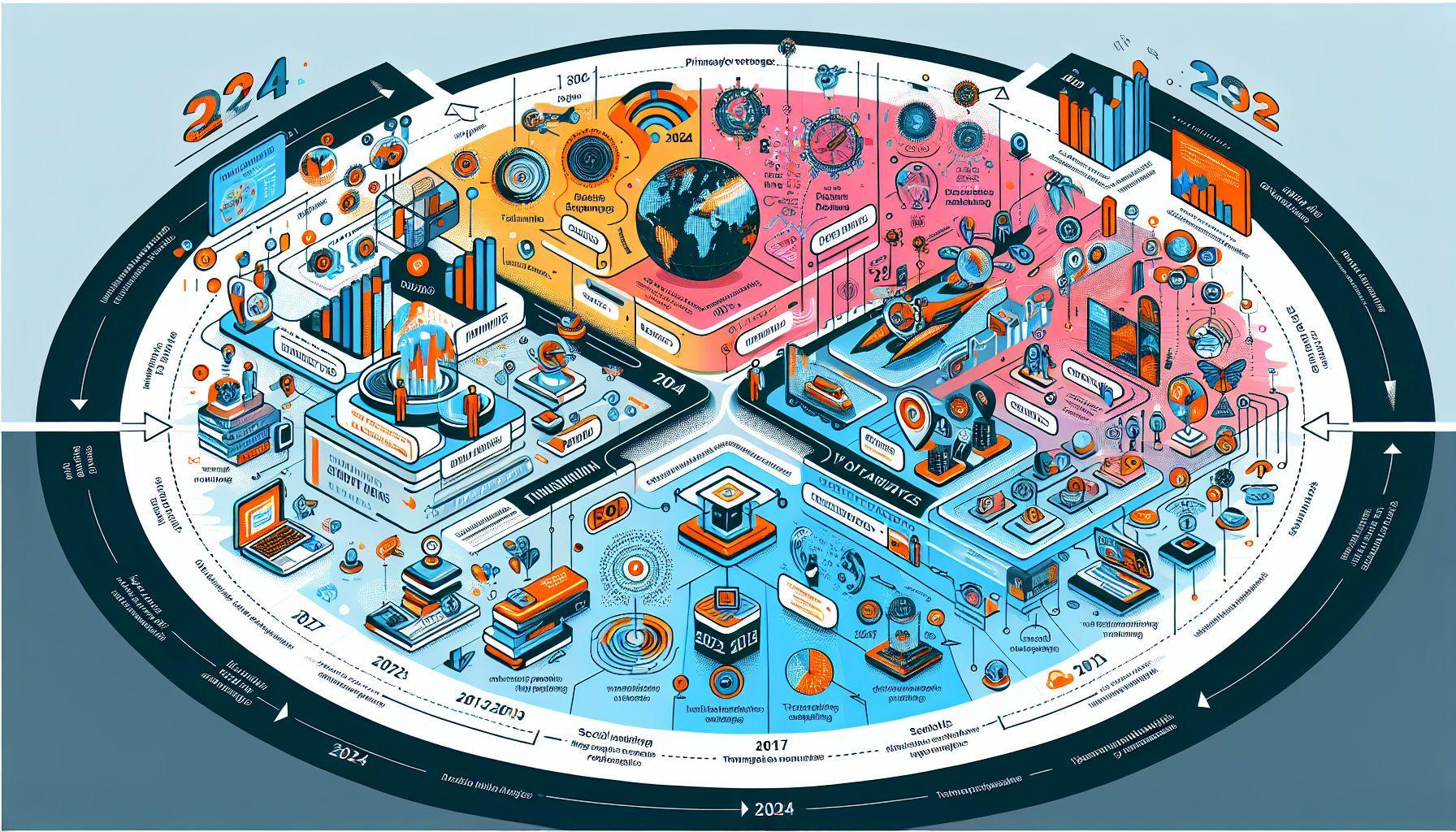Forecasts for the Development of Contextual Advertising in the Age of Automation
October 17, 2024
•
8 minutes

Content
Contextual Advertising: Automation Trends and Development Forecasts
Contextual advertising has undergone significant changes in recent years due to process automation. More and more brands and advertisers are recognizing the benefits of using algorithms and AI to manage advertising campaigns. In this article, we’ll explore the key trends and forecasts that can help you understand how contextual advertising will evolve in the coming years.
1. Increasing Importance of Data-Driven Targeting
The volume of user behavior data continues to grow. Today, advertisers have access to a wide range of information about users: from browsing and purchase history to social media preferences.
Examples of data usage for targeting:
- Retargeting: Showing ads to users who have visited the website but didn’t make a purchase. These ads remind users of the product and encourage them to complete their transaction.
- Demographic targeting: Using data such as age, gender, location, and interests to create more personalized ads for specific audience segments.
Advantages of personalized targeting:
- Improved campaign performance due to more relevant messaging.
- Reduced advertising costs thanks to higher conversion rates.
2. Adaptive Ad Formats
With the development of technology and automation, advertisers increasingly use adaptive ad formats that can change their content and appearance based on audience, device, or even time of day. Adaptive ads create a more relevant experience for each user, boosting engagement.
Examples of adaptive formats:
- Google Responsive Display Ads: These automatically adjust to available ad space, modifying size, format, and content to expand reach and reduce setup time.
- Personalized offers: Ads dynamically change based on user interests. For instance, if a user searched for sneakers, ads may show specific models and discounts.
Benefits:
- Time savings on creating multiple ad versions.
- Greater relevance and customization based on user behavior.
3. Simplified Optimization Process
Automation in contextual advertising helps simplify campaign optimization. Algorithms can adjust bids, allocate budget, and determine the most effective creatives based on real-time results.
Example:
- Google Ads Smart Campaigns: These use machine learning to automatically optimize bidding and budget distribution to maximize conversions at the lowest cost. This allows advertisers to focus on creativity rather than constant manual adjustments.
Advantages:
- Lower management costs.
- More efficient budget usage with algorithm-driven bidding.
4. AI Integration
The future of contextual advertising is closely linked to artificial intelligence, which helps analyze large data sets and predict user preferences. AI can identify patterns in behavior and suggest solutions to improve ad performance.
Examples:
- Chatbots: Integrated into ad campaigns, they assist users in real time, answering questions and driving conversions.
- Predictive analytics: AI can forecast which users are most likely to convert and target them with tailored offers.
Benefits:
- Increased conversions through precise targeting.
- Reduced analytical overhead as AI handles most data analysis and recommendations.
5. A New Approach to Analytics
Traditional analytics is being replaced by more advanced, multidimensional systems that analyze data in real time and suggest actionable insights. This allows advertisers to adapt faster and improve campaign outcomes.
Examples:
- Google Analytics 4 (GA4): GA4 uses event-based tracking, offering a deeper view of user actions across websites and apps. Integration with Google Ads helps assess ad impact on conversions.
- Business Intelligence (BI) systems: Tools like Power BI and Tableau collect and visualize data from multiple sources, providing real-time dashboards and smarter decision-making.
Benefits:
- Deeper understanding of user behavior and campaign performance.
- Faster response to changing audience needs or ad performance.
Practical Tips for Adapting to Changes in Contextual Advertising
1. Use automation tools
- Leverage Smart Bidding in Google Ads to automate bidding and achieve better results with less manual effort.
2. Invest in data analysis
- Build analytical skills or hire specialists to optimize campaigns using GA4 and BI tools for deeper audience insights.
3. Test and adapt adaptive formats
- Try different responsive ad formats and see which ones work best for your audience. Use Google’s automated recommendations to improve quality scores.
4. Train your team to use AI
- Educate your team on how to use AI tools effectively and maximize the benefits of automation and predictive analytics.
Conclusion
Contextual advertising is evolving rapidly through automation and AI. Personalized targeting, adaptive formats, automated optimization, AI integration, and advanced analytics open up many opportunities for advertisers to enhance their campaigns. Those who embrace these tools and adapt to change will achieve better results and drive future advertising success.
Keywords:
contextual advertising, advertising automation, adaptive ad formats, Google Ads, artificial intelligence in marketing, advertising analytics, data-driven targeting, contextual advertising trends and forecasts.
Recent posts








